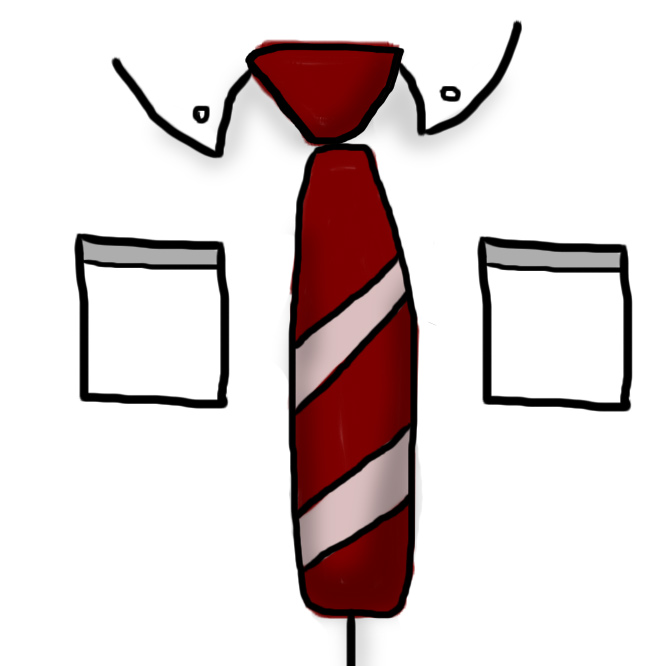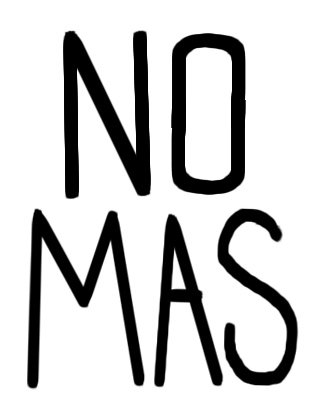
Recipe for A Great Client
- Start with two cups of a realistic budget
- Add a dash of trust
- Mix in a handful of market research
- Use two tablespoons of decision making
- Launch early to get golden brown feedback
- Sprinkle a little enthusiasm on the top
- Serve piping hot!
The full article "Ingredients of a Great Client..."
“We appreciate and love all our clients. Each client offers a new project with new problems to solve. The clients that we really enjoy are the ones that give us a direction and let us do our job. They listen to us, know when to make a decision, and when to go with our ideas. They let us know when we have missed the mark (which never happens ‘cause we’re super-awesome).”
When you find yourself in the position of the client, whether you’re building a house or developing a website, trust your consultant. Do your research then make decisions with confidence when the time comes.
It has got to be one of the most stressful things in the world--to have to be right and perfect all the time in order to avoid people seeing through your facade and figuring out you’re just another flawed human being. If that’s you, perhaps you should seek some professional help. Otherwise, when you’re wrong, or you make a mistake, calmly (and without embarrassment) admit your errors, apologize, and move on. Humility prevents humilia- tion...except when you’re perfect like Allan and Steve, but then you don’t have to worry about it.
Learning how to interact with clients at each stage of your project is es- sential in keeping your project running as smoothly as possible. You need to be in direct contact with the client when starting out so you’re able to know exactly what the expectations are and reset them when they are off target.
Don’t try to win every project. Not every project is for you. There’s a certain type of client that works well with you. In the beginning, you’ll need to accept most clients, but as your client base grows, and the demand for your work increases, you’ll be able to be picky about what projects you take on. Tell your clients that you only choose to work on selected projects. Tell them that you’re very exclusive. They’ll change their tone with you. It will change to a pitch that says, “We’re hoping you’ll pick us!” Never be desper- ate for work, never be available right away and play hard to get. It’s human nature to fear rejection, so they’ll naturally want you to take the project and not reject them.
“We reply to every email we possibly can. Even though we don’t do consulting anymore, we still get 1-5 leads a day from our site, and we reply with something like this:
LessEverything rarely takes a phone call with someone who hasn’t provided a budget price range. For some reason, people with limited funds tend to talk a lot. They’re probably trying to convince you to work with them. Either way, unless you’re starving for work; don’t waste your time.
The email should also show you how much of the process and planning they’ve developed. If they’re unable to tell you about their project, then they’re not ready to put down a deposit. If they’re still in the early phases of the planning process, then it will require more of your time with them.
The ideal person you’re looking for is ready to buy and ready to put down a check for $10,000 or more. The goal of the first contact is to filter out the potential clients with no money. Your initial contact is to make the client realize that they’re stepping into the process stream. Get in or get out. Stop with the “I’m building a relationship” nonsense. A relationship is great, but not if they only have $5,000 for a $75,000 project.
“It takes between three and twenty hours from first contact to signing contracts. Try to minimize that time and push as much as you can into the paid cycle. If you’re on the third two-hour phone call where you’re talking through their idea again, it’s time to say ‘I think we need to sign a contract and start building your business.’ If they still balk, then walk away until they’re ready.”
People realize if you’re selling them; so that you don’t. They will also appre- ciate you using normal vocabulary. Do everyone a favor and leave the geek speak at the office, (unless you’re speaking with geeks, then you can speak in geek speak).
Only build what is needed now. Don’t try to predict the future. This will be a struggle. Most clients want to plan months and months into the future. Chances are, the project won’t get that far. You’ll need to keep the client thinking in one-two month releases. Most consultancies try to take all of a client’s money. That sucks. Discuss what they need in order to run their business after launch, then build what they need and help them succeed.
Be kind to people. This applies to how you spend their time. Don’t waste it. If you don’t want their project, or they can’t afford you, refer them to someone else.
You’re a freelancer in high-demand with clients, and people want to work with you. Clients don’t want you to beg for work. If they do, you don’t want to work with them. A prospective client won’t be able to place their confidence in you if you have no confidence in yourself.
Don’t lie, cheat or steal. Do what is right. Never leave a business relation- ship with the other party able to say you didn’t treat them fairly. People dis- agree, and there will be misunderstanding. Some people are impossible to please, but at the end of the day, you should be able to sleep well knowing you did every reasonable thing for your clients. Do not do this to protect your reputation-- do it because it is better to do right than it is to be right. Let that be your reputation.
Set a realistic expectation about the outcome of your project so you can deliver exactly what the client needs on time and earn the client’s confi- dence for future projects. Bank balances are temporary; reputation lives on. Reputation, personal growth, and income all grow at the same rate.
Allan and Steve are people-pleasers. They want to make everyone happy (especially those who have shown them kindness). Their biggest fault is in setting themselves up for failure. One of the worst things you can do is overpromise and underdeliver.
Never trust a contractor’s time or price estimate. If a web developer tells you two weeks, then you should tell the client four. It’s hard to estimate your time, and very few people possess these skills. If you’re not good at estimating, start by admitting that and trying to find ways to overcome it. Steve is very good at estimating. He knows how long it will take a developer to complete a task. He knows better than the developer, himself, knows. Hint: developers always think it takes less time than it does. The main thing Steve does differently when he estimates is in taking his time and trying to think through every part of the task. If the feature is X, then he tries to picture the code and knows that Y and Z also have to be written so that X is complete.

Professionalism sucks. It means being stiff and stodgy. It means being reserved and putting on airs. Be yourself, always be yourself. Tell jokes. Talk about your kids, ask about theirs. Be genuine; people respond to that.
Become the client’s friend. Business is personal, so go ahead and mix personal and business. Become friends with them on Facebook. Tweet at them. Why hide? Now is the time for you to develop a relationship (of course this isn’t professional, but neither is missspellingz in your ebuk). Professionalism should be replaced with friendliness and honesty.
You owe it to your clients to give them the best product that their money and budget can afford. You owe it to them to give them your opinion and your thoughts. You should tell them if their ideas are straying from their goal. If they want you; they want your opinions. If they don’t want your opinions, then you need better clients. Give them something to be proud of because you’re their stepping stone to success.
Sometimes, the product the client thinks they should build isn’t what they should build. Again, you’re the expert; not the client. Many times, the client is the biggest enemy of a project. They’ll have terrible implementation ideas, and you’ll have to fight for the user. The client might have too much money and may want to add too many features. You’ll have to fight for the user again.
At the end of the day, do work that brings you fulfillment, work that makes you proud.
“We strongly believe that the way to make money is to make something that people want to pay for. As soon as a client is trading easy for more clicks, we lose interest in the project.”
There’s nothing wrong with being proud of your skill and work. In fact, if you can’t be proud of it, you need to find better clients or change careers. Your job should be something you’re passionate about. Your work should be a reflection of your talent. Your clients should shout your praises. However, if a client initially brags about all the people they know, and how they’ll recommend you to others, there’s a high likelihood they have no money and no friends. The reason--they don’t know how to treat people, so no one likes them.
Maybe your ego, your arrogance or your confidence isn’t as high as it could be, but you know how to build, run, and support an application. You want your clients to listen to you. You’re the expert. They’re paying you for your opinion.
The client should remember you’re in charge. That’s right. They should realize that they’re the money holder, but you’re the expert. If you’re unable to help them maintain that desire for your advice, you’re now officially a “do-boy”--you’re there to implement what they say. Congrats! Your value has dropped, and the trust is gone. This job isn’t just about a paycheck. Feel free to push back at this point, but don’t expect them to change.
“In the past, when a client made decisions that we disagreed with and advised against, the project would turn from a collaboration to a client dictatorship. We were implementing their beliefs and assumptions. For us, it’s hard to stay passionate about a project when we think it strays from what we believe will make it successful. At that point, it turns from passion to a paycheck. This blows. It’s time to talk to the client about the situation and either get a contractor on the project or fire the client.”
When to fire a client
Firing a client is never easy. There is fear about losing the revenue; fear about the affect on your reputation. If you are at that point where the work is miserable, you’re not happy, or you can’t make the client happy--ending the relationship is the right thing to do.
Ending a working relationship with a client is NOT a negative thing. If you aren’t happy in the relationship, they most likely aren’t either. There is no need to hold them back from finding someone that can make them happy. You should want your clients/customers/employees to be happy (even if that means sending them elsewhere).
No one likes to end a relationship (even an unproductive, unhealthy one), but it’s usually for the best. For the best? How is firing a client and losing that income better for you? There’s a simple answer: in the time it takes to try and live up to their expectations, you can make three new clients happy. Which makes more sense?
The full article "When To Fire A Client"

It’s really that simple. Sometimes, you know this at the beginning of a project, and sometimes, you don’t know until the middle or end of one, but as soon as you do realize you’re not making them happy, start taking the steps to end the relationship. Maybe you can’t make clients happy because they are asking for more than you normally offer. For LessEverything, this would be a client that wants to talk two hours every day (which is way beyond normal service). When you realize this, it’s probably the right time to require more money. You say, “We would love to keep working with you, but since we’re doing things beyond the way we normally work, we’ll have to charge you more.”
Some clients will understand and go ahead and pay the cost. Most will be offended and walk away. Either response is a win. The moment you realize that your client’s expectations are greater than what you can provide is the moment in which to fire your client (especially if their expectations aren’t in the contract). Killing yourself to do all kinds of extra stuff for a client, who takes it for granted, is not good business. Just walk away. Of course, if you have no other client, putting up with it might be better than sitting on your thumbs.
This happened to LessEverything recently. Allan and Steve were talking to a really cool client who had a great idea for an application. They went through a very extensive “idea phase” and on the eve of signing the con- tract, Allan and Steve balked and suggested they find another development team. They had realized that there were two ways to complete the project, but choosing one or the other was going to leave someone unhappy. So they suggested a few firms the client could go with and wished him the best, parting as friends. This seems to be a much better ending than going through a lot of work to achieve dissatisfaction in the end (a mistake that always leads to animosity).
Two people had an average idea for a project (nothing amazing). Most com- munication was with one of the two. He was very enthusiastic, and totally got the Less philosophy. He really liked Allan’s ideas and tried to incorpo- rate them in their plan. He and Allan worked up a project plan that they were both happy with. Once the other fellow was brought in, he wanted to change things and add a bunch of nonessential features. Allan and the first guy tried to work through it all and trim things back, but then the second guy still wanted to add all kinds of other things again. On the sixth go around, Steve was on the call and finally said “I think we can build something that would be awesome and something that we would be happy with, but I don’t think we can build something you would be happy with,” and we told them to find a different developer.
Did Allan and Steve make a mistake? Should they have taken the project and done all the work and taken all the money? No. LessEverything isn’t about making money--it’s about building great things that make people happy (making money is a byproduct of that). Allan and Steve heard from the guys about 16 months later, and it as it turns out, they started down the road of the larger project and then the second partner finally realized why less is better. They apparently changed their direction and are now fairly happy.
The second story is a client who loved Allan and Steve. He totally got the Less philosophy and was on board all the way. He let LessEverything trim the functional spec and was really pleased with their work. Except that he wasn’t. He didn’t like the design, but didn’t want to pay to change it, and every time he was given an opinion, he would listen and not take it. Every time. Finally, Allan and Steve stopped offering their opinion. This was a really nice guy, mind you--someone whom Steve had considered to be a real friend. He would never launch. Six months after they figured version-one was ready, he still balked because “it wasn’t good enough.” Allan and Steve realized that it would never be good enough. They spoke with the guy’s financial backer who agreed with them, but he couldn’t help either. Every time the guy asked for a change in scope there was a battle over money. Allan and Steve switched to hourly and the client complained that they were charging too much by billing for time spent on the project. By the end of the project, it seemed like he started every phone call saying, “I’m really disappointed.” Finally, Allan and Steve suggested he find another team. They wished him the best, but clearly they weren’t making him happy, and the project was making them miserable.
Did Allan and Steve make the right decision in this case? Even though Steve lost a friend--the relationship had already been strained-and the project was too far out of sync with LessEverything’s values. The project did finally launch with a new, but weaker design and the financial backer left the project.

When a client can’t see the value in your work, they’ll either gravitate to a higher-priced one or compromise for the cheapest.
The first year Allan was freelancing, he got pushed around by clients. He was a “yes man.” Even so, he made very little money that year. Allan decided to stop this negative course of action. He stopped taking the projects he didn’t want, and he started judging the projects based on the work, the overall scheme of the schedule, and the attitude of the client.
“When we get an email or phone call, we are always as friendly and accommodating as possible. We will ask potential customers to give us a two-minute overview of their needs and project goals.
“After we hear their thoughts, we ask the question everyone is scared to ask. ‘So what is your budget?’ A lot of the time, we get the response, ‘I don’t have a real budget.’”
“My thoughts on that reply is that it’s crap. Everyone knows how much they have to spend. With this response, we reply, “We don’t work on projects without a budget,” and here’s why: we don’t grab our price out of the air. It never works out. In the past, we’ve spent long hours writing project outlines for potential clients, only to find they don’t have a reasonable budget. When this happens, we’ve wasted a ton of hours. These are hours we could have spent on another client or working on an existing project.”
You have to know how much you want to spend. If you haven’t thought about it, you’re not serious about your project. Sometimes the client will hem and haw. They’ll say, “I don’t have an idea of what it would cost.” They may not have any idea what it will cost, but they all know how much they can afford.
When you buy a house, car, diamond, or computer, you tell the salesperson how much you want to pay. Their job is to take your budget and give you the most you can get for your money. Being a freelancer, small business owner, or any variety of entrepreneur, you don’t have time to waste. You must bill hours and get things done. This methodology has worked very well for others. Can your pre-client negotiations be improved? Probably so. Think about it.
Everyone is on a budget, but beware of the customer that chooses you just because you’re cheaper than another company. Most of these customers are quick to leave, quick to complain, and rarely happy. If your service is a great deal, be prepared to do volume, which will weaken your ability to bring service to the table. The good news is that most people aren’t looking for a deal. What?! Yes. Do you buy generic cereal? Probably not. Most people will spend a few dollars more for a better product or service.
When all products and services seem to be on a level playing field, the po- tential customer will pick the cheapest price. Can’t position yourself as the value proposition? Perhaps it’s time to find a new playing field.
“I wish I could go back in time and find myself years ago, before Steve and I started all this. I’ d tell myself a few things--even though I probably wouldn’t listen. I’d tell this less gray-haired Allan to not get so personally attached to clients. You’ll have a hard time with them emotionally. Even to my future-self, it would probably be worth a try. I fall in love with people. I feel their pain. I want to make all our clients happy--even though our job as web app builders isn’t to build whatever they wish. We’re the smart ones. We’re the ones who know how to build an app. If their budget allows, they’ll add all sorts of crap and keep creeping up the feature bloat until the app appeals to no one. Here’s what I’ d say:
“Clients will break your heart. Clients will try to ruin their projects. You’re going to get upset with them. They will think they’re right, but stand your ground. Plead with them. Reason with every ounce of logic you have left in order to fight to keep their idea simple, smooth and clean. Be strong, young, handsomer Allan. Be strong.”
Cashflow is the lifeblood of your business, here's how to avoid cashflow issues.